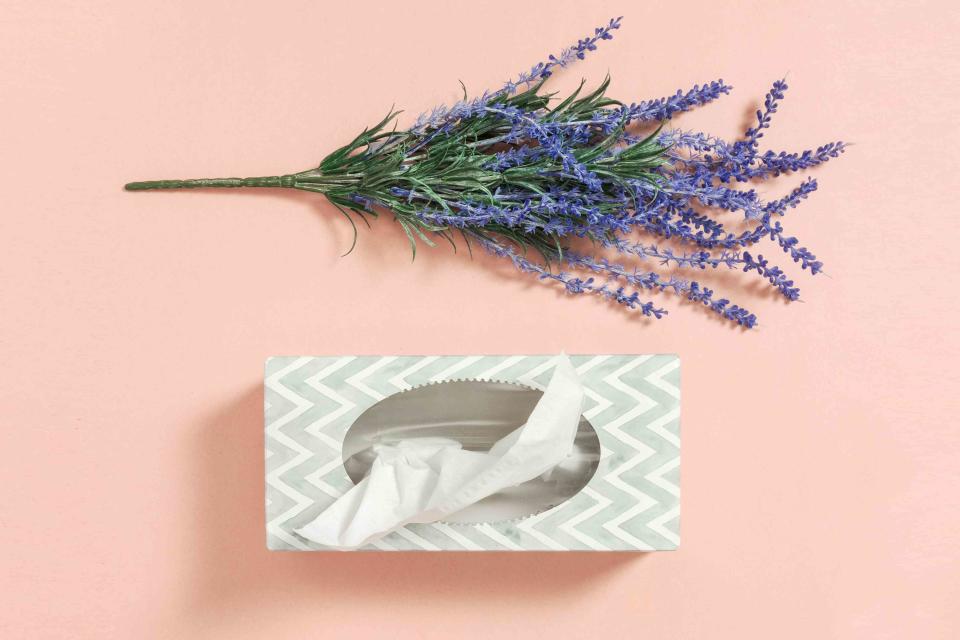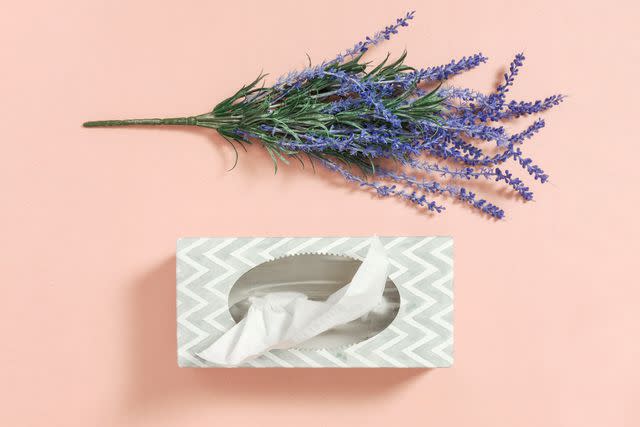How to Stop Spring and Summer Allergies From Ruining Your Fun
Nip that sniffling, sneezing misery right in the bud.

Studio Light and Shade/Getty Images
In spring and summer, you want to soak up the sunshine—but seasonal allergies can put a big damper on your outdoor plans. Who feels like frolicking al fresco when you're a watery-eyed, sneezy mess? Here's why seasonal allergies can last from springtime through swimsuit season, and what you can do to relieve the misery.
Why Spring and Summer Allergies Happen
Seasonal allergies happen when the immune system mistakenly interprets pollen as a threat, triggering inflammation—and thus sniffles and stuffiness and suckiness. Depending on where you live, certain pollens can float around in the air from early spring until the first frost, according to Purvi Parikh, M.D., an allergist and immunologist in New York City and spokesperson for the Allergy & Asthma Network. Tree pollen rages throughout spring, grass pollen is out in full force in May and June,“ and some states can see fall’s ragweed pollen appear as early as July,” Parikh says.
Climate change is intensifying the problem: Research from the University of Utah’s School of Biological Sciences shows that, compared with three decades ago, pollen seasons start earlier, last longer, and are more, well, pollen-packed. So even if you’ve never had allergies, you may find yourself struggling lately. “We see a lot of adults who are now developing allergies,” Parikh says. “Not only are allergies more common, they’re getting more severe over time.” (Allergies can also turn into asthma, which causes coughing, wheezing, and chest tightness. “Every pollen season, there’s a rise in asthma-related ER visits,” Parikh says.)

Studio Light and Shade/Getty Images
Allergy-Soothing Strategies
Sadly, some of the very things we love most about this laid-back season can cause or exacerbate our itchy-eyed, runny-nosed misery. Here are some ways to guard against potential triggers and treat symptoms so you can get on with your life.
Stay inside in the a.m.
Swap your bright-and-early walk for an afternoon or evening stroll (or exercise indoors) and keep your windows shut until late morning. Pollen counts tend to be highest between 5 a.m. and 10 a.m., says Sherwin Hariri, M.D., an allergist and immunologist based in Beverly Hills, Calif.
Avoid the aftermath of a storm.
You might assume that heavy rain washes away pollen, but it can actually make the situation worse. “When rain hits the ground, it can break pollen into fine particles that make their way into the lungs,” Parikh says.
Change your outfit.
Clothes can be a pollen haven, so if you’re having an especially rough allergy day, put on a fresh outfit when you get inside, Parikh suggests. Even better: Take a shower to wash off anything lingering on your skin.
Control indoor allergens.
Some patients have both indoor allergies and summer allergies,” Hariri says. “When we take care of the former, they have fewer seasonal symptoms overall.” Decrease your exposure to potential allergens by allergy-proofing your home: slipping dust mite covers on pillows and mattresses, vacuuming frequently, running a dehumidifier (dust mites and mold love humidity), and using a HEPA air purifier. Dog owners, you might want to keep hypoallergenic pet wipes or a damp washcloth handy and give your furry friend a quick rubdown when he comes bounding back inside. “Some patients wonder why they only have allergic reactions to their dogs in the summer,” says Jeanne Lomas, D.O., director of allergy and immunology at the WellNow Allergy practice in Clarence, N.Y. “It may not be the dog’s dander, but the pollen he’s tracking in.”
Check your fruit intake.
OK, this is a wacky one. If you’ve noticed that some of your favorite summer produce, like melons, peaches, and tomatoes, give you a strange itch in your mouth or tickle in your throat, it might be oral allergy syndrome. Some fruits and veggies have similar proteins to those found in pollens from trees, grass, and weeds. “You become allergic to the pollen first, and over time, your body gets confused and mounts a reaction to the produce as well,” Lomas says. To prevent the tingling, wash the produce really well in water, peel it when possible, or heat it up.
Use a nasal rinse.
If you’re really congested or feeling pressure or pain around your eyes, cheeks, and forehead, try washing out your sinuses nightly with a neti pot or a nasal rinse (a saline irrigation system in a squeeze bottle), like one by NeilMed.
Over-the-Counter Relief
Can't beat 'em? Treat 'em. You've got three options for over-the-counter meds:
Oral antihistamines block histamines to treat congestion, runny nose and sneezing, itching, hives, and watery eyes. (Histamines are chemicals made by the immune system to help us get rid of allergens, but they may become overactive when we have a reaction.) Choose from common brands—like Claritin, Zyrtec, or Xyzal—or generic versions, which Lomas says are just as effective. If one kind doesn’t do it for you or stops working after years of successful treatment, switch to another. Different medications use different antihistamines, and you may respond better to a new-to-you option.
Nasal sprays, like ones by Flonase and Nasacort, are steroid-based treatments that target nasal inflammation and mucus to make breathing easier. Astepro is a nasal antihistamine that can relieve congestion, a runny or itchy nose, and sneezing.
Eye drops are available in medicated (antihistamine) and non-medicated (lubricating only) formulas. Lomas likes the non-medicated drops because you can use them throughout the day, whereas antihistamine drops can only be used once or twice a day. “Lubricant drops help relieve dry, itchy eyes and wash out pollen that might have migrated in from touching your eyes,” she says. Pro tip: Put the bottle in your fridge for a soothing, cooling effect.
Which treatment should you choose? For nasal ickiness or eye irritation, a spray or drops may be enough to ease your discomfort, Lomas says. But “if you’re not getting relief with focused treatment, consider adding an oral antihistamine,” she says. Good news: It’s usually safe to use the pills, drops, and sprays at the same time (but see your provider if symptoms persist).
The Sccop on Allergy Shots
Allergy immunotherapy is a tried-and-true treatment that’s been around for more than a century, and it’s worth looking into if your allergies are moderate to severe and can’t be well controlled with over-the-counter medications. (Or if you’re just tired of taking meds—immunotherapy enables some people to stop them altogether.) After an allergist identifies your allergies, you’re given diluted doses of the substances you’re allergic to, training your immune system to become tolerant. “This is one of the most natural and effective treatments we have, and most people, even children and those who are pregnant, are candidates,” Parikh says. Heads-up that it can be a commitment: You may need to get shots regularly over a period of time (possibly years!). Allergy immunotherapy is most often offered as injections, but for some allergies—ragweed, certain grasses, and dust mites—treatment is available as under-the-tongue tablets.
Runny nose, cough, headaches, sneezing—are you suffering from seasonal allergies, or sick with a cold or Covid? Answer these questions to sleuth it out.
Do you have a fever? Allergies don’t cause fever (commonly defined as a temperature over 100.4 degrees), Parikh says.
Where do you feel blah? Unlike allergies, viral illnesses, such as colds and Covid, usually come with full-body symptoms, like joint pain, muscle aches, and gastrointestinal problems.
How long have your symptoms lasted? You should recover from a cold or Covid in one to two weeks. If you have a sickness you just can’t shake, it could be allergies. At this point, see your doctor to be sure!
For more Real Simple news, make sure to sign up for our newsletter!
Read the original article on Real Simple.

